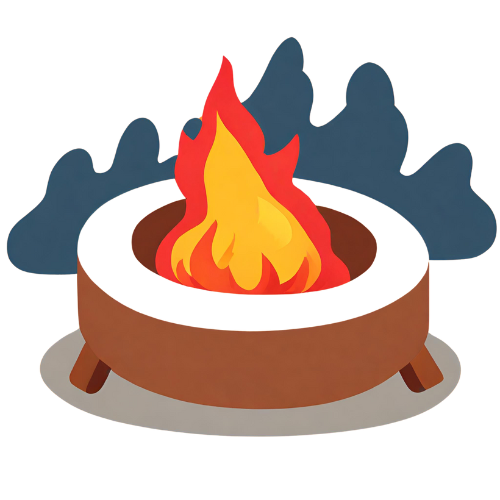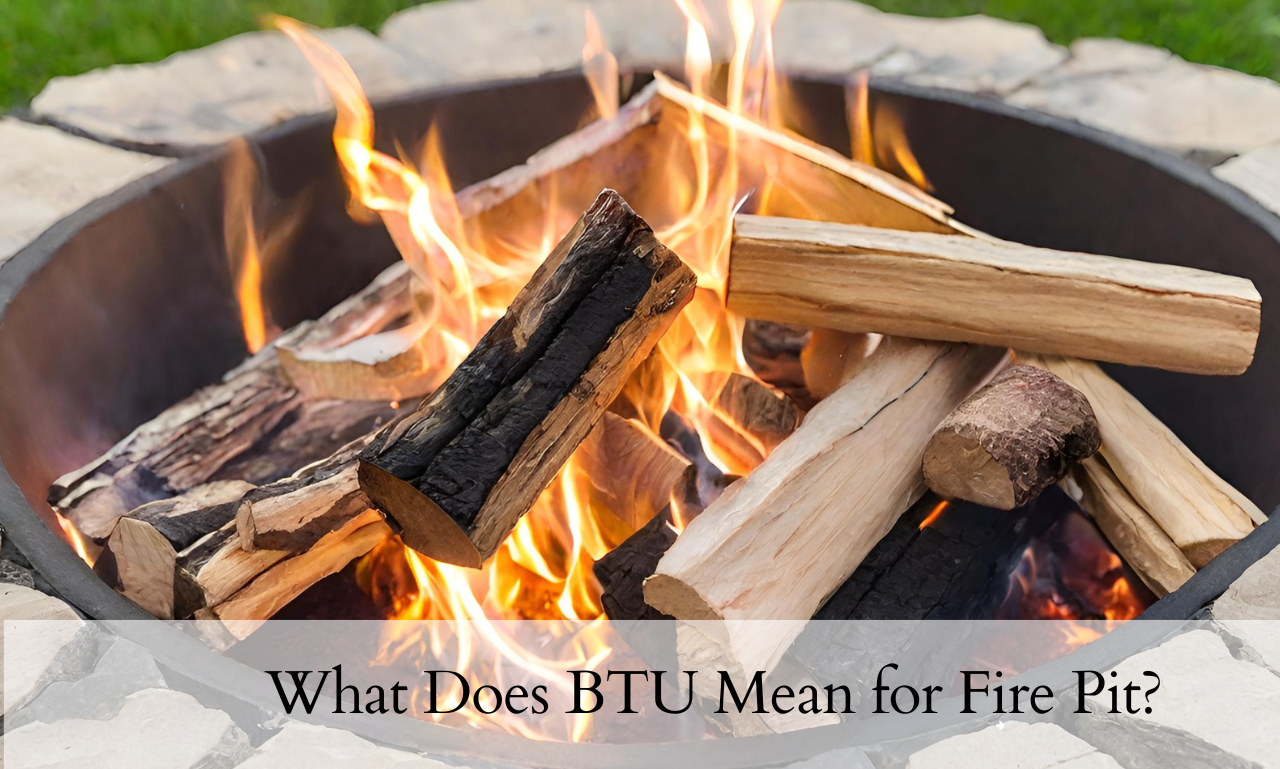BTU stands for British Thermal Unit. It’s a way to measure how much heat a fire pit can make. The bigger the BTU number, the more heat you get. It’s like comparing a small campfire to a large bonfire. A high BTU fire pit keeps you and your friends warm outside.
To learn more about BTU and finding the best fire pit, read the full article.
What is BTU
BTU stands for British Thermal Unit. It’s a traditional unit used to measure heat. One BTU is the amount of heat needed to raise the temperature of one pound of water by one degree Fahrenheit. In fire pits, BTU tells you how much heat the fire pit can give off.
In a fire pit, BTU measures how powerful the heat is. A higher BTU means the fire pit can produce more heat. This is important when you choose a fire pit because it tells you how warm it can make the area around it. For example, a fire pit with a high BTU rating can heat a larger space, making it good for big patios or outdoor gatherings. On the other hand, a lower BTU rating might be enough for a small, cozy setup.
BTU Ratings in Different Fire Pits
Small fire pits
Small fire pits typically have BTU ratings from 30,000 to 40,000. This level is suitable for compact spaces like a small backyard or patio. The heat output is enough to create a cozy atmosphere for a couple of people, ideal for intimate gatherings or quiet evenings.
Medium Fire Pits
Medium-sized fire pits fall in the range of 40,000 to 60,000 BTU. This amount of heat works well for average-sized outdoor spaces. It provides sufficient warmth for family events or medium-sized groups, making it a versatile option for regular backyards or patios.
Large Fire Pits
For larger spaces, large fire pits with over 60,000 BTU are recommended. This high heat output is effective for keeping a spacious area or a large group of people warm. Suitable for big patios or outdoor events, it ensures comfort during gatherings in vast open spaces or colder conditions.
Choosing the Right BTU for Your Fire Pit
Getting the correct heat level from your fire pit is a must for those cool evenings you spend outside.
Your Heating Needs
Before you pick a fire pit with the right heat output for your space, you must first think about what you need. How much warmth are you looking for? If you have a large area or live in a place that gets very cold, you’ll need a fire pit with a higher BTU rating.
This will ensure that the heat spreads throughout the space. On the other hand, if your space is smaller or you live somewhere with a milder climate, a fire pit with lower BTUs should do the job and keep you warm without being too intense.
Considerations Based on Fire Pit Location and Usage
Where you plan to put your fire pit and how you will use it also play a big part in deciding the right BTU. If it will be in an open area where wind can blow the heat away, look for a model with more power (meaning more BTUs). For shielded or enclosed areas, less heat might be needed.
Think about how often you will use your fire pit as well. For occasional use, a smaller, less powerful unit might be fine, but for regular gatherings, choose one that can deliver consistent warmth over time.
Comparing Fire Pit Models and BTU Ratings
Look at different fire pit models and their BTU ratings. A model with a high BTU rating can give off a lot of heat, but it might also use fuel faster. This could mean more expenses in the long run. Models with lower BTU ratings might not get as warm but can save you on fuel costs. Balance the initial price of the fire pit with the ongoing cost of the fuel.
Your ideal fire pit offers a good mix of heat output, efficiency, and value, fitting within your budget and meeting your outdoor heating requirements.
Fuel Types and BTU Output
Choosing the right fuel for your fire pit is key because different fuels have different BTU outputs. BTU measures the heat you get — it’s like a score for how well a fuel can warm your outdoor space. Propane, natural gas, and wood are common fuel choices for fire pits, and each one has a unique BTU range. Your decision can affect how much warmth you’ll get, and also how long your fuel will last. Understanding the BTU output for each fuel type helps you choose wisely, so you can enjoy the perfect fire pit experience.
BTU Variations in Different Fuel Sources (Propane, Natural Gas, Wood)
Each fuel type you use for your fire pit gives you a different BTU output. Propane often has a high BTU rating and brings on the heat quickly.
Natural gas generally offers a lower BTU output compared to propane but is usually less expensive and burns cleaner.
Wood varies a lot in BTU output, depending on the type you use; hardwoods usually give more heat than softwoods. You must pick your fuel by thinking about how much heat you need and how long you want your fire to last.
Pros and Cons of Each Fuel Type about BTU
Propane: With propane, you get a lot of heat (high BTU output), and it starts up fast. It’s great if you want a powerful, no-hassle fire. The downside is that propane might cost you more, both for the fuel and the fire pit setup.
Natural Gas: If your home already uses natural gas, it’s easy to hook up and keeps costs low. Natural gas burns clean and is perfect for a less intense, warm glow. But the BTU output isn’t as high as propane, and installation can be tricky, needing a professional.
Wood: Wood gives you that classic crackling fire and can produce a lot of heat if you pick the right kind. It’s usually cheaper but requires more work to start and keep the fire going. Plus, the heat (BTU output) isn’t as easy to control as gas.
- What exactly is BTU and why is it important for my fire pit?
BTU stands for British Thermal Unit and it is a measure of heat output. It’s important for your fire pit because it indicates how much heat you can expect it to produce. A higher BTU rating means more warmth, making it a crucial factor to consider when choosing your fire pit, especially if you want it to efficiently heat a specific area. - How many BTUs should I look for in a fire pit to heat my outdoor space comfortably?
The number of BTUs needed to heat an outdoor area comfortably depends on the size of your space and the climate you live in. Generally, a fire pit with 40,000 to 60,000 BTUs is sufficient for a typical patio. However, larger spaces or colder environments may require a fire pit with higher BTUs. - Does the type of fuel I use change the BTU output of my fire pit?
Yes, different fuel types can influence the BTU output of your fire pit. Propane typically offers a higher BTU output compared to natural gas, meaning it can generate more heat. Wood’s BTU output can greatly vary, but it generally provides a different heat experience that might require more effort to manage. - Can I increase the BTU output of my fire pit if it’s not warm enough?
It’s not usually possible to increase the BTU output beyond the design capacity of your fire pit. If you need more warmth, you might have to consider a larger fire pit or one that uses a fuel type with a higher BTU rating.

